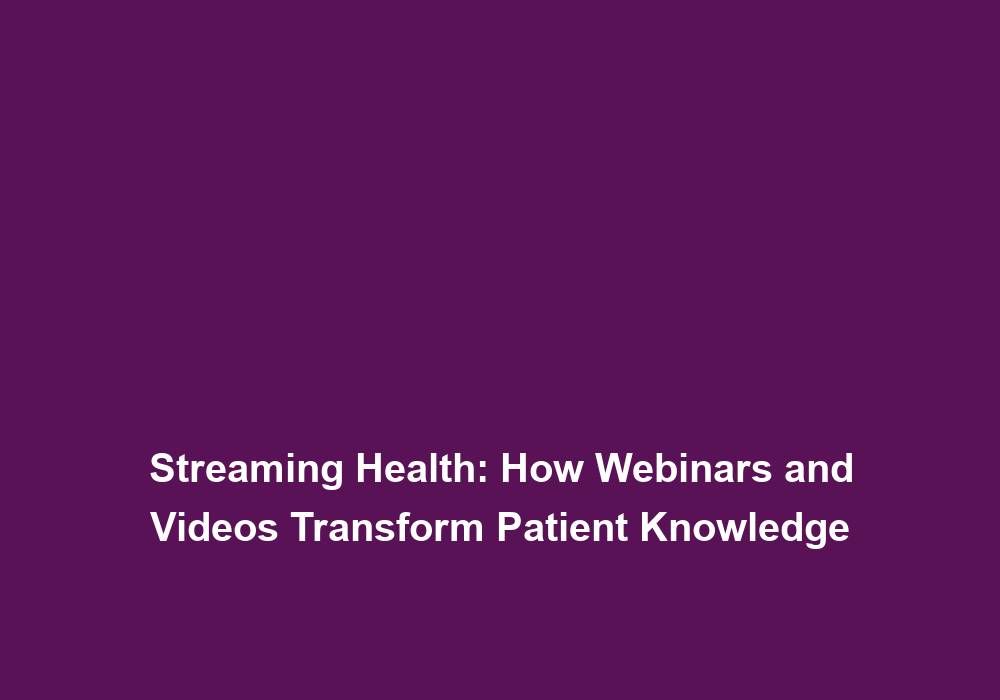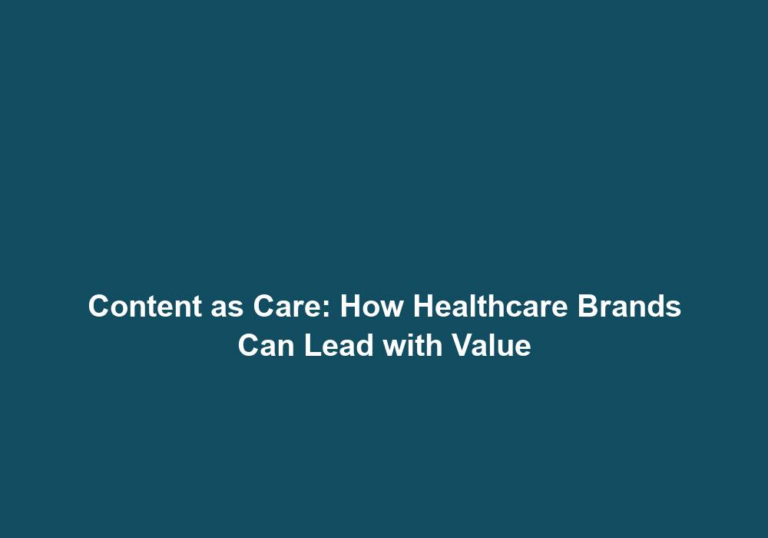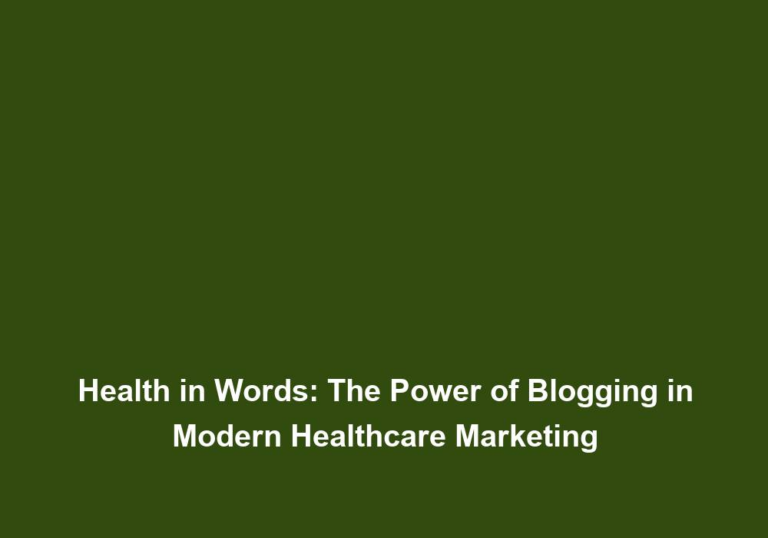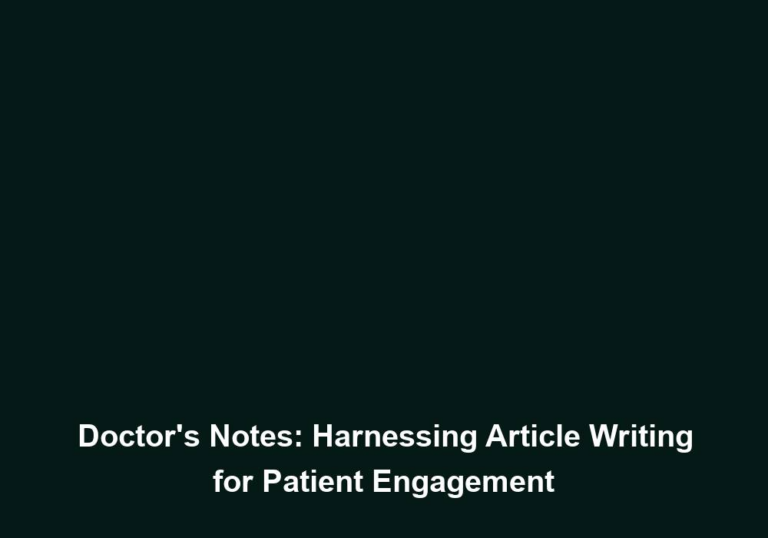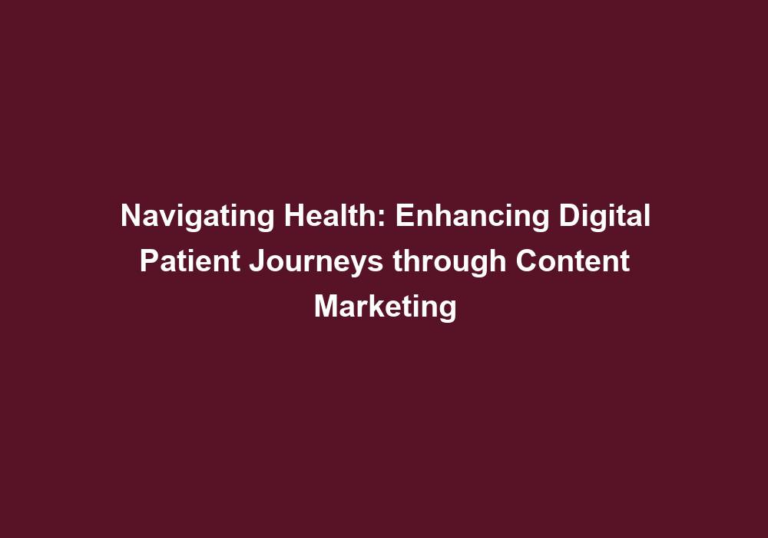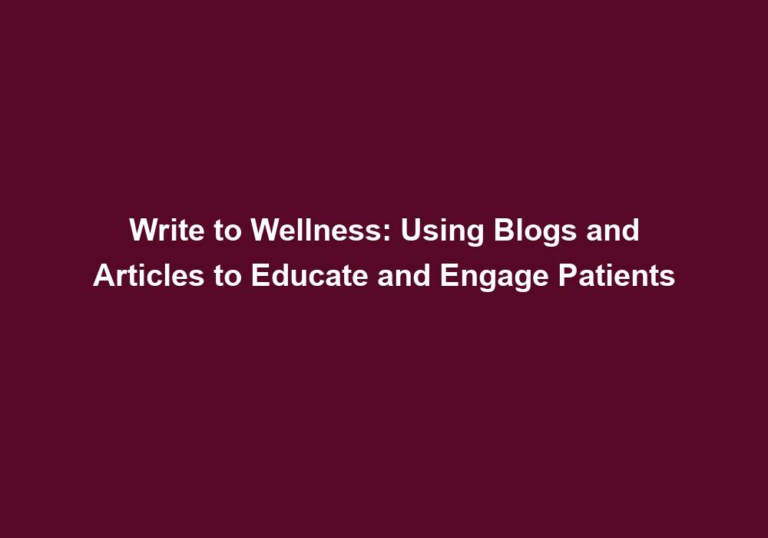Streaming Health: How Webinars and Videos Transform Patient Knowledge
In the world of healthcare, patient education plays a crucial role in empowering individuals to make informed decisions about their health. Traditionally, this education has been provided through face-to-face consultations with healthcare professionals, pamphlets, or brochures. However, with the advent of modern technology, webinars and videos have emerged as powerful tools for transforming patient knowledge. This article delves into the benefits and impact of streaming health webinars and videos, emphasizing their ability to educate, engage, and empower patients.
The Power of Webinars in Patient Education
Convenience
Webinars offer the convenience of accessing educational content from the comfort of one’s own home. Patients no longer have to travel long distances or wait for appointments to gain access to valuable information. They can simply log in to a webinar session at their convenience and learn about a wide range of health-related topics.
- Patients can participate in webinars from anywhere, eliminating the need for travel and saving time.
- Webinars provide the option to watch recorded sessions, allowing patients to access information at their preferred time.
- The flexibility of webinars accommodates busy schedules, enabling patients to balance their healthcare education with other responsibilities.
Engagement
Webinars provide an interactive platform where patients can actively engage with healthcare experts. Through live chat features, patients can ask questions, seek clarification, and receive real-time responses. This direct interaction fosters a sense of trust and encourages patients to delve deeper into their health concerns, resulting in a more comprehensive understanding of their conditions.
- Live chat features in webinars create a sense of community, allowing patients to connect with others who share similar health concerns.
- Patients can gain valuable insights from the questions asked by fellow participants, expanding their knowledge beyond their own queries.
- The interactive nature of webinars encourages patients to become active participants in their healthcare journey, leading to improved patient engagement and self-management.
Visual Learning
Webinars often incorporate visual aids such as slides, images, and videos to enhance the learning experience. Research suggests that visual learning is more effective in retaining information compared to traditional text-based methods. By utilizing compelling visuals, webinars can simplify complex medical concepts and help patients grasp and remember crucial information more easily.
- Visual aids in webinars help patients visualize medical procedures, anatomical structures, and treatment options.
- Images and videos can effectively demonstrate the correct way to perform self-care activities, such as wound dressing or inhaler techniques.
- The combination of auditory and visual learning in webinars appeals to different learning styles, ensuring information retention for a diverse audience.
Access to Expertise
Webinars provide patients with direct access to a diverse range of healthcare professionals and subject matter experts. This ensures that patients receive accurate, up-to-date information from reputable sources. Moreover, webinars often feature specialists who can offer different perspectives, allowing patients to gain a comprehensive understanding of their condition and treatment options.
- Webinars bring together experts from various medical fields, providing a holistic approach to patient education.
- Patients can benefit from the collective knowledge and experience of multiple healthcare professionals, enhancing their decision-making abilities.
- The opportunity to interact with specialists in webinars enables patients to receive personalized advice and guidance tailored to their specific needs.
Leveraging Technology
Webinars leverage the power of technology to overcome various barriers to patient education. Language barriers can be addressed through live translation services, ensuring that patients from different linguistic backgrounds can access vital health information. Additionally, webinars can be recorded and made available for on-demand viewing, ensuring that patients can revisit the content at their convenience.
- Live translation services in webinars enable healthcare information to be accessible to a global audience, regardless of language proficiency.
- Recorded webinars provide patients with the flexibility to review information multiple times, reinforcing their understanding of key concepts.
- The utilization of technology in webinars promotes inclusivity and accessibility, reaching patients who may have limited mobility or other physical limitations.
The Transformative Impact of Video Content
Visual Storytelling
Videos have the power to convey complex ideas and emotions in a concise and engaging manner. Through compelling storytelling techniques, videos can captivate patients’ attention and evoke empathy, making it easier for them to connect with the healthcare information being presented. This emotional connection enhances the overall learning experience and increases information retention.
- Storytelling in videos creates a narrative that resonates with patients, making health-related information relatable and memorable.
- Emotional storytelling in videos can inspire patients to take action and make positive changes in their health behaviors.
- The combination of visuals, narration, and music in videos creates a multi-sensory experience that enhances information absorption and recall.
Demonstration and Instruction
Certain medical procedures or lifestyle modifications can be challenging to understand through text or verbal explanations alone. Videos offer a visual demonstration of these procedures, ensuring that patients have a clear understanding of what to expect. From medication administration techniques to rehabilitation exercises, videos provide step-by-step instructions that patients can easily follow and replicate.
- Videos showcase the correct technique for medical procedures, reducing the risk of errors in self-care practices.
- Patients can observe the proper form and execution of exercises, minimizing the chance of injury during rehabilitation or physical therapy.
- Visual demonstrations in videos enhance patient confidence in performing various healthcare tasks independently, promoting self-efficacy.
Accessibility
Videos can be easily shared and accessed across various platforms, such as social media, websites, or mobile applications. This accessibility ensures that patients can consume health-related content on their preferred devices, at their own pace, and in a format that suits their learning style. Videos also have the potential to reach a wider audience, including those who may not have access to traditional healthcare resources.
- Sharing videos on social media platforms increases their reach and allows for easy dissemination of accurate health information.
- Mobile applications with video content enable patients to access educational resources on-the-go, promoting continuous learning and engagement.
- The versatility of video formats accommodates different learning preferences, such as visual learners or individuals with hearing impairments.
Patient Empowerment
The availability of educational videos empowers patients to take an active role in managing their health. By watching videos that explain their conditions, treatment options, and self-care strategies, patients gain the confidence to make informed decisions about their well-being. This empowerment leads to improved patient outcomes, increased compliance, and better communication between patients and healthcare providers.
- Educational videos equip patients with the knowledge necessary to actively participate in shared decision-making with their healthcare providers.
- Patients who are well-informed about their conditions and treatment options are more likely to adhere to prescribed therapies and lifestyle modifications.
- Empowered patients can effectively communicate their needs, concerns, and preferences to healthcare professionals, fostering a collaborative and patient-centered approach to care.
Supplementing In-Person Care
Videos serve as a valuable supplement to in-person care, especially during follow-up appointments. By providing patients with video resources that recap important healthcare discussions, healthcare providers can reinforce key information, reduce misunderstandings, and enhance patient adherence to treatment plans. This integration of videos into patient care ensures continuity of education beyond the confines of a clinical setting.
- Recap videos remind patients of essential information discussed during in-person appointments, decreasing the likelihood of forgetting crucial details.
- Patients can review videos at their own pace, allowing for a deeper understanding of complex medical concepts that may have been briefly covered during appointments.
- The combination of in-person care and video resources creates a comprehensive educational experience that reinforces patient knowledge and promotes long-term health management.
In conclusion, webinars and videos have transformed patient education by offering convenience, engagement, visual learning, access to expertise, and leveraging technology for better healthcare outcomes. By incorporating these digital tools into healthcare practices, healthcare professionals can educate, engage, and empower patients in a way that transcends traditional limitations. As technology continues to advance, streaming health webinars and videos will continue to play a pivotal role in transforming patient knowledge and ultimately improving the overall quality of healthcare.

